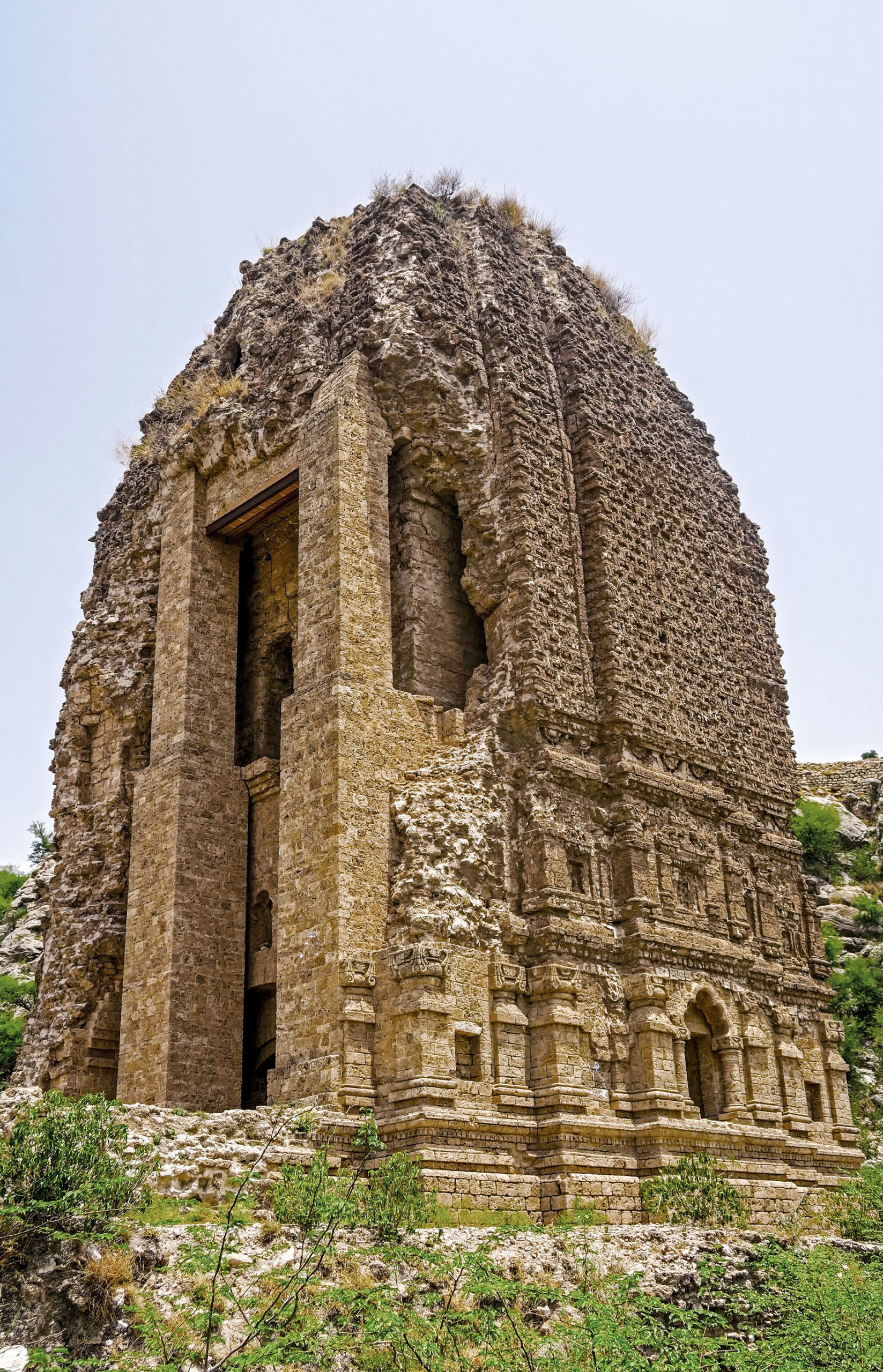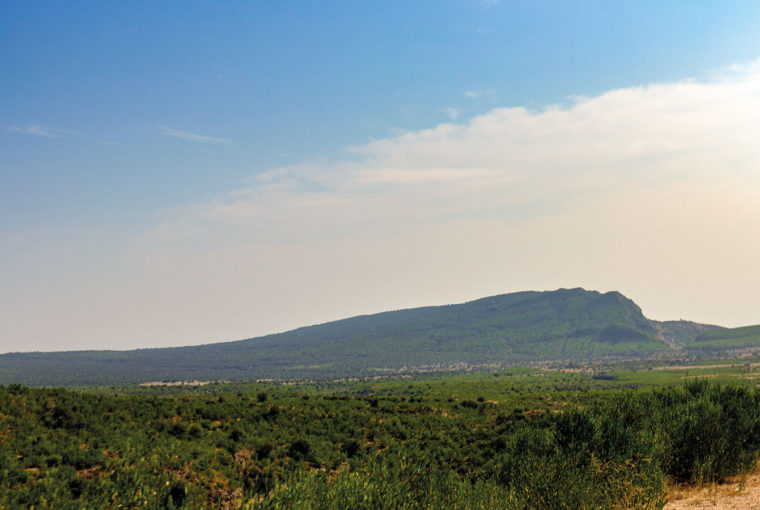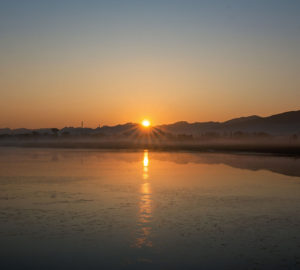Located in the district of Khushab, Punjab, Soon Valley is known for its beautiful natural landscapes as well historic remains of ancient civilizations. From long-forgotten Hindu temples to colonial-era gardens, sunset views at scenic lakes to orchards of wild olive and pomegranate trees, Azeem Ahmed Khan encounters diverse sights that speak of a land steeped in myriad riches and enveloped in a sense of inexplicable calm.
By Azeem Ahmed Khan
In many ways the Soon Valley is the embodiment of Pakistan – beautiful, diverse, confusing and inexplicably neglected. It is a land of many riches yet hardly ever figures into travel plans. Affordable, accessible and endlessly compelling, a journey through Soon Valley is like visiting a foreign country, the likes of which would be hard to imagine existed.
The Soon Valley is an area measuring 780 square kilometres, located in the north-western part of district Khushab in Punjab. Sher Shah Suri coined the name of the district due to the sweetness of its water (khush-ab). The valley and its surrounding areas boast some extensively rich history. It is now considered home to what might be the earliest civilization in human history, as evidenced by the recent discoveries of ancient stone tools. It goes with the nature of this place that such a significant finding went almost unnoticed.
Moreover, the presence of hills and forests within its terrain meant that ancient rulers considered it somewhat of a sanctuary and, as a result, a significant number of forts are found here. Undoubtedly, many more remnants of a rich past are just waiting to be dug up from underneath the surface of these mysterious hills and mountains. Gripped by a desire to explore this beautiful area and discover the ruins of Hindu temples and Buddhist stupas that I knew existed here, I left Lahore with my friends Ali and Hasan for a three-day trip over the summer. We had booked a room at the Sakesar PAF Base, the highest and the farthest point of the valley and planned to use it as a base for excursions into the valley.

To describe the terrain of Soon Valley is next to impossible since there is seemingly no set characteristic to it. It resembled the American Wild West in some places, the Australian Outback in others and there were even hints of the rolling green meadows of the English countryside in several places. One moment we were driving through a forest, only to find ourselves on a vast plateau next, flanked by a barren hill on one side and the vast, unending plains of Punjab on the other. It was beautiful and bewildering at the same time and ensured that the journey never became monotonous.
There are many ways to get to Soon and most take around 6 hours from Lahore to Sakesar. Our first stop was meant to be the Kanhatti Gardens, built by the British in the 1930s. I had heard of a waterfall there and we proceeded to it in the hopes of beating the heat with some fresh, cold water.
About 30km before Kanhatti Gardens we spotted a board indicating the direction for Chambal Mandir. There was no mention of such a temple on Google Maps or on the web. But since there was a signpost, we decided there simply had to be an actual temple as well. Asking for directions from the first people we encountered, we set off down the canyon.
It seemed like a strange place for a temple. The path downwards was quite steep and we had to climb over rocks all the way down. The only sounds we could hear were the loud and melodious chirping of birds. About 15 minutes later, we suddenly came upon an extremely leafy part of the mountain and the songs of the birds amplified. Scores of colourful butterflies whirled around in a frenzy everywhere. There was a rusted iron gate in front of us and what looked like fortified walls around it. We were disappointed because it looked nothing like the temple we had imagined. The trees were beautiful though, and to get a better view I climbed atop the wall. To my delight, inside the walls was an actual temple!
A serene pool of water lay in the middle of the temple structure, surrounded by more greenery than I had ever laid my eyes on. The trees were massive, especially the Buddha trees, and their size and girth left little doubt that this place was centuries old. The temple grounds were built as terraces on the edge of the cliff and at the bottom was a small stream of water whose sound echoed throughout due to the narrowness of the canyon. Birds of several colours could be seen flying around. It was a nature lover’s paradise. The arduous hike back to the top of the canyon explained the low profile of the temple but we were not complaining. Chambal Mandir was the cleanest and greenest part of our whole trip, free from the litter that defaces natural beauty.

Kanhatti Gardens are located roughly 9km into a side road from the main Naushera-Jaba road, a route that presented stunning vistas. After a series of tough but rewarding side expeditions, what awaited us was the perfect culmination of a hot and heavy day. The gardens were beautiful, just as most British-era gardens usually are. The highlight, though, was the waterfall and the view that preceded it.
An endless sea of strange red rocks met the eye wherever it searched, interspersed with some green shrubbery and what looked like the white remains of a river. The brain was unable to make sense of it all. It did not need to. Just gazing at this strangely mesmeric scene was enough.
However, the view from the top of the waterfall was even more dazzling. After the long hike under the blazing sun, God had prepared for me the perfect denouement to the day; a Jacuzzi by the sunset full of cool, clean water. It even had a natural jet of water that kept a constant stream in and out of the Jacuzzi. I had uncomfortably lugged a watermelon throughout the walk and it was the perfect food to eat in such a setting.
As we left before dark, there was still one more perfect moment awaiting us – tea at sunset with a view for the ages.
The valley had a parched and barren look in some areas. At this time of the year, the wheat had been harvested and hence it lacked the aura of life and fertility that is provided by crops. Spring is certainly a better time to visit for those looking for a bucolic countryside in the midst of gently sloping hills. The wheat is a majestic golden, the grass is light green and the contrast of the hills with the fields can be breathtaking.
We had an early breakfast at the Sakesar PAF base on our second day, with an uninterrupted view of the adjacent Namal Valley and headed to Ambh Sharif, the location of the famous Hindu temple on Sakesar Mountain. It was about an hour’s drive from the base on the road to Quaidabad. The drive this time was not through a plateau or valley but around crimson mountains laced with purple and yellow rocks.

Ambh Sharif derives its name from a shrine located about five minutes away from the better-known Hindu temples – a wonderful example of coexistence. The temples are architectural marvels and are believed to be more than a thousand years old, dating back to the Hindu Shahi period from 615-960 CE. The smaller structure stands on the edge of the cliff while the bigger, multi-storied building is about 50 yards away from it. The setting gives the temples an extra touch of divinity, as if perched on the pinnacle of a mountain amongst the clouds of Eden.
Sunset at the saltwater lake Uchali right beneath Sakesar was another surreal experience. A narrow road has been built into the middle of the lake where a strong and pleasant breeze was constantly blowing. The sun disappeared behind Sakesar Mountain just as it does in those seemingly quixotic children’s paintings.
The dominant sound throughout the trip had been the soothing sound of cowbells. In some inexplicable way it provided a sense of soothing calm, as if reassuring the traveller that this was a safe, domesticated place. Indeed, we encountered more domestic animals than humans as herds of cows, goats and sheep would be moving about in search of grazing pastures, all achieved with their customary insouciant grace. They were the masters of these parts and it was they who set the pace of life here; slow, measured, peaceful and content.
By the third day we had only spent our mornings and nights at Sakesar PAF base so we spent our last morning exploring it before our departure. The base was built in the ’50s and was beautifully designed in conjunction with the topography of the area. It was completely peaceful, despite the presence of a large number of guests. This was due to the extremely high number of trees which not only housed birds that chirped all day long but also covered the terraces in a way that you felt isolated in your own little world. The base was full of wild olive as well as apricot and pomegranate trees.
There was an extremely pleasant walk around the base with stunning views, especially that of Uchali Lake. We also found the remains of a gurdwara. It had been stripped of its jewels but some parts of the vividly colourful wall paintings remained.
The weather, topography and people of Soon are considerably different to those of Central Punjab. The people speak mainly Saraiki in a sing-song lilt, emphasizing the ends of words no matter what their actual pronunciation. What is even more striking is the fact that we did not once encounter anyone indulging in a game of roadside cricket, an ubiquitous sight in the rest of the province! Instead, volleyball was the choice of the youth and it is said that Pakistan’s best players come from this region.
The Soon Valley and its adjacent areas are indeed a land within a land. From the Paleolithic Stone Age to the Gandhara period and the subsequent Hindu Shahi and Muslim eras, the valley has remnants of all and is hence a must-visit for lovers of history and culture.





